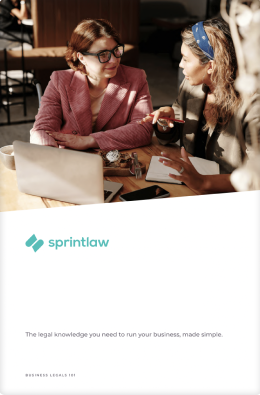Contents
Trade mark adverse reports let you know there is something wrong with the trademark you are trying to register. It could be a simple error of mislabelling the goods and services the trademark will relate to, or it could be that the trade mark already exists.
The process of registering a trade mark is a long and careful process. So, at times, applications don’t immediately come back with the response you had hoped for.
Luckily, there are a number of ways to proceed when you have been hit with an adverse report from IP Australia. In this article, we’ll go over:
- What a trade mark adverse report is
- The instances in which an adverse report could be received
- Ways to respond to a trade mark adverse report
- What the ‘opposition period’ is
- How to ensure your trade mark is valid internationally
What Is A Trade Mark Adverse Report?
A trade mark adverse report is essentially a negative response to a trademark application. In other words, some issues may have come up while assessing your application.
The report is usually submitted after you have filed to register a trademark or completed a TM Headstart application. Once your request has been reviewed and IP Australia decides the trade mark cannot be registered, they will respond with an adverse report detailing the specific reasons for the rejection.
If you’ve received an adverse report, don’t stress! You have 15 months to respond to the report (you can request for an extension on this period if desired) and decide on the best possible course of action – we’ll discuss these options below.
When Would I Receive A Trade Mark Adverse Report?
A trade mark adverse report is received when IP Australia concludes that the trade mark does not fit the relevant requirements.
It’s important to keep in mind that while trademarks can be almost anything (logo, phrase, smell, picture or sound) they need to be original and specific to the organisation or individual attempting to register it. The most common reasons trademark applications receive an adverse report are:
- The trademark selected is too general and is not distinct enough
- There already is a registered trademark that is the same or too similar to the one you are attempting to register
- An error was made on the application
It’s not unusual for trademark applications to come back with adverse reports or to be rejected entirely. In fact, the world has seen some interesting trademark applications of people and businesses attempting to own the most obscure things. At times, they are successful and sometimes they are not for a wide variety of reasons.
| Example Eden Sarl was a French company that attempted to trademark the smell of fresh strawberries for its beauty products and leather items. The European Union’s trademark association rejected this on the basis that strawberries don’t have a singular distinct smell and they can vary from each fruit. |
I’ve Received A Trade Mark Adverse Report: What Do I Do?
If you have received an adverse report, remember that you have 15 months to respond to the application. The way in which you respond to an adverse report depends heavily on the reasons for which it was unsuccessful.
We’ve listed some commonly travelled paths for those who have received a trademark adverse report.
Amend Your Request
If your trademark has been rejected as there was an issue with the class of goods and services you had selected, you have the option to amend your application.
Amending your request may involve adding more clarity to the goods and services the trademark will represent or selecting the correct one (if you hadn’t done so previously).
Submit Evidence Of Use
If you have been using the trade mark you have attempted to get register and there is already an existing trade mark like it, there is always the option to submit evidence of use.
In proving the trade mark has been in use prior to the already registered one, the application can be tilted in your favour. If you plan on doing this, gather any and all evidence of instances your trademark has been used.
Likewise, if a trademark has been deemed too general and not specific enough, then you can provide evidence to prove that it is a recognised symbol synonymous with your business’ services.
However, to be on the safe side, we always recommend securing all intellectual property (including trade marks) as early as possible.
Get Consent From Conflicting Trade Mark Owners
If IP Australia has found that the trade mark you wish to register is already in use or far too similar to an existing one, then you also have the option to get consent from the owners of the conflicting trade mark.
Consent usually involves negotiating with the owner of the already registered trade mark to make some changes that can allow your application to progress successfully. For instance, they can amend the goods or services their trademark applies to, giving room for your trade mark to exist in a similar or the same space.
A letter of consent should always identify:
- The applications numbers for both trademarks
- Representation of the trademarks
- The goods or services that are being consented to
No limitations can be placed in a letter of consent as IP Australia cannot enforce them.
To ensure you’re taking the correct steps, it’s worth familiarising yourself with the negotiation process.
Drop The Trade Mark Application
A final option is to drop the application entirely.
If there is too much push back on the trade mark, then you may be better off finding something entirely new. This can be disheartening as it will mean rebranding entirely or starting the creative process over, but it is much better than having something in the market that is not original or having to deal with legal headaches.
It’s best to do everything you can to avoid this situation in the first place, so it’s wise to seek the help of a legal professional from the very beginning.
| Example Mason is starting his own burger place called Mason’s Burgers. For his trade mark, Mason designed an M for the first letter of his name and coloured bright orange. His lawyer suggested they do a TM Headstart application first so they can be well prepared for the potential outcome. The application came back negative as Mason’s trademark was far too similar to the popular McDonald’s logo and they operated within the same class of services. Mason decides it’s better to design a new logo. |
Once your trademark is accepted upon successfully completing the application process, the next phase requires going through an opposition period.
What Is The Trade Mark Opposition Process?
The trade mark opposition process is the final stage of getting your trade mark registered. Once an application for a trademark has been submitted and the application has been approved, the trademark is then available to the public for a period of two months.
During this time, if someone contends to the trade mark being registered, they have the option to come forward. If there is no opposition during this period, then your trade mark will be registered officially.
What Happens If My Trade Mark Infringes Someone Else’s Trade Mark?
If your trade mark infringes on another trademark, then the application will be rejected.
Your options here are the following:
- Create a new trade mark
- Purchase the trade mark from the original owner
- Demonstrate that you have been using that trade mark for longer
This can be tricky, so contact us today for expert help in navigating the situation.
Is My Trade Mark Valid Overseas?
A trade mark cannot be valid overseas automatically. If you apply for a trade mark in Australia through IP Australia and the application is successful, the trade mark will only be valid in Australia.
If you are interested in ensuring your trade mark is valid internationally, then you will need to apply via the Madrid System.
Madrid is the official international trade mark system. Approximately 128 countries are part of the Madrid System, therefore, any applications for an internationally recognised trade mark can be done there.
How To Apply For An International Trade Mark
If you are looking to apply for a trade mark in another country, you always have the option to apply to that country directly. Many trade mark owners are choosing to use the Madrid System, as it can be done online.
First, you must ensure your trade mark is already registered in Australia before proceeding with the application to have it registered internationally. You can find out more about applying for an international trade mark with the Madrid system here.
Our legal professionals can help with this too, so reach out if you have any questions!
Key Takeaways
Receiving an adverse report after filing for a trademark does not mean it’s game over, as there are a number of options you could potentially pursue. As we mentioned, this will depend on the specific circumstances of your application. To summarise what we covered:
- Adverse reports usually indicate that there was something wrong with the trade mark application.
- Trade marks often receive adverse reports if they are too descriptive, general or already in use
- Common options to respond to an adverse report include: fixing an application error, amending the request, getting consent from the conflicting owners, submitting evidence of use or disregarding the application entirely
- Once an application for a trade mark has been accepted, it will be in opposition for a period of two months
- If you have trade mark in Australia, you can get register it internationally by either applying directly in overseas regions or by utilising the Madrid System
If you’ve received an adverse report from IP Australia, Sprintlaw has a Trade Mark Adverse Report Advice package where we walk you through your options and next steps.
If you would like a consultation on trademark adverse reports, you can reach us at 1800 730 617 or team@sprintlaw.com.au for a free, no-obligations chat.
Get in touch now!
We'll get back to you within 1 business day.












